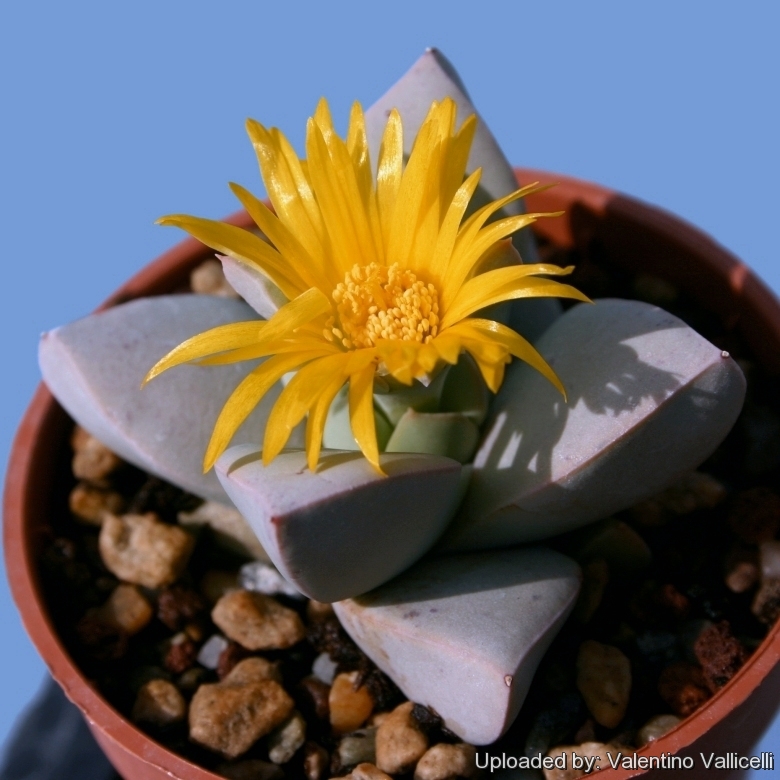
Schwantesia loeschiana Photo by: Valentino Vallicelli
It is a nice very free blooming succulent.
Origin and Habitat: Namibia (Lüderitz-South).
Altitude range: 10 - 150 metres above sea level.
Habitat: Schwantesia loeschianaSN|14371]]SN|14371]] is often found growing among quartzite stones.
Synonyms:
See all synonyms of Schwantesia loeschiana
back
Accepted name in llifle Database:Schwantesia loeschiana TischerJahrb. Deutsch. Kakteen-Ges. i. 71 (1936)Synonymy: 2
back
Description: Schwantesia loeschianaSN|22597]]SN|14371]], the best-known species of the genus, is a small cushion forming, low growing, stemless leaf succulent. This plant forms a compact tuft of chalky green to bluish white leaves, fused at the base, with the upper side flat, and the under side vaulted and sharply keeled. Its flowers are single, on a short peduncle, yellow, up to 5 cm in diameter.
Stem: Very short with only 2-3(-4) pairs leaves.
Leaves: (15-)25-35(-80) mm long, 15-18 mm wide, 12-15 mm thick, pale grey to dusty green or bluish, fat, succulent, much contracted and thickened, narrowing from a broad base, the upper leaf surface forms a flat or slightly domed almost equal side triangle, the under side vaulted and chin like sharply keeled. Side faces slightly arched. Margin, sharp, often reddish. The new leaves appear from within the old leaf pair fissure which gives the impression of the plant having sets of alternate appressed leaves.
Flowers: 3-5 cm wide yellow, with 43-48 petals, 130-140 stamens and 5 long, thread-like stigmas. Petiole 10-15 mm long.
Fruit (capsules): With low rims up to 1,2 mm tall, uncovered cells and adjacent expanding keels.
Seeds: 0,8 mm long x 0,45 mm broad.
Blooming season: Autumn.
Remarks: S. loeschiana is very similar with Schwantesia herreiSN|14371]]SN|22597]] but it has shorter leaves and is broader and stouter.
Notes: If Schwantesia are raised from seed a most striking phenomenon will be noticed. The leaves of the seedlings are quite short and thick and united together right up to the top, that is, they form real little bodies. The young leaf pair is united into a body in the same way; it develops within the earlier one, using the sap and nourishment absorbed from it, so that gradually the old one dries up to a skin. This proceeding occurs at the end of the plant's growing period so that, during the resting period, it gives the impression that it is about to die. At the beginning of the new growing period, however, we see that the charming little plant has by no means lost its life, but now splits the dry skin of the preceding body, pushes out and begins to grow. If we compare the second body formed with the first we find that its leaves are rather more deeply divided than the former. The events described are now repeated annually, and the young leaf pairs, in consequence, become more and more deeply divided until finally we have before us a plant whose form is indistinguishable from that of other Mesembryanthemaceae which form clumps. It is most interesting to watch this development. (Gustav Schwantes 1957)
Bibliography: Major references and further lectures
1) Hermann Jacobsen “Handbuch der sukkulenten Pflanzen: Mesembryanthemaceae” G. Fischer, 1955
2) Heidrun E.K. Hartmann “Illustrated Handbook of Succulent Plants: Aizoaceae F-Z” Springer Science & Business Media, 2002
3) Stuart Max Walters “European Garden Flora: A Manual for the Identification of Plants Cultivated in Europe, Both Out-of-Doors and Under Glass” Cambridge University Press, 27 lug 1989
4) Smith, G.F.; Chesselet, P., Van Jaarsveld, E. J., Hartmann, H., Hammer, S., Van Wyk, B-E.; Burgoyne, P., Klak, C. and Kurzweil, H. “Mesembs of the world.” Briza.1998.
5) Werner Rauh “The Wonderful World of Succulents: Cultivation and Description of Selected Succulent Plants Other Than Cacti” Smithsonian Institution Press, 1984
6) Gustav Schwantes “Flowering Stones and Mid-day Flowers: A Book for Plant and Nature Lovers on the Mesembryanthemaceae” Ernest Benn, 1957
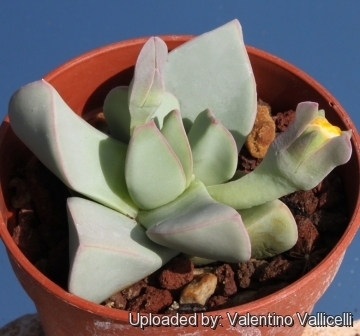 Schwantesia loeschiana Photo by: Valentino Vallicelli
Schwantesia loeschiana Photo by: Valentino Vallicelli Schwantesia loeschiana Photo by: Giuseppe Distefano
Schwantesia loeschiana Photo by: Giuseppe Distefano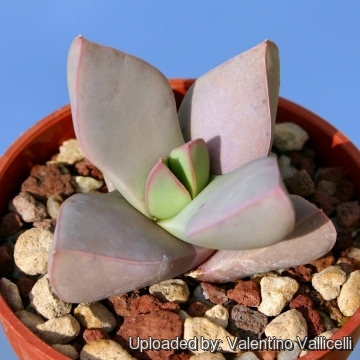 Schwantesia loeschiana Photo by: Valentino Vallicelli
Schwantesia loeschiana Photo by: Valentino Vallicelli Schwantesia loeschiana Photo by: Valentino Vallicelli
Schwantesia loeschiana Photo by: Valentino Vallicelli (form) West Gamkab, Namibia Photo by: Valentino Vallicelli
(form) West Gamkab, Namibia Photo by: Valentino Vallicelli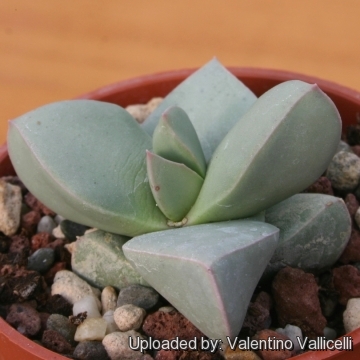 Schwantesia loeschiana Photo by: Valentino Vallicelli
Schwantesia loeschiana Photo by: Valentino Vallicelli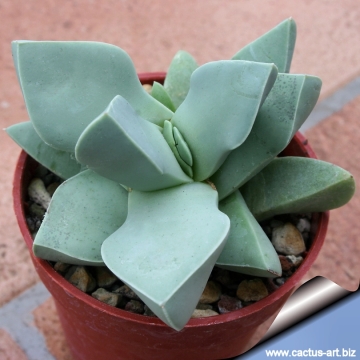 Schwantesia loeschiana Photo by: Cactus Art
Schwantesia loeschiana Photo by: Cactus ArtSend a photo of this plant.The gallery now contains thousands of pictures, however it is possible to do even more. We are, of course, seeking photos of species not yet shown in the gallery but not only that, we are also looking for better pictures than those already present.
Read More... Cultivation and Propagation: The Schwantesia is easy to grow. These plants grow in autumn-winter rain areas and head for dormancy in summer.
Growth rate: It is a slow growing species that clusters easily in cultivation, if grown correctly, it will reward the grower with generous displays of tiny flowers.
Soil: Since roots are quite shallow, use a cactus mix or add extra perlite or pumice to regular soil potting soil. A gritty, very free-draining compost is suitable, and clay pots help the plants to dry out between watering. For best results, use a shallow pot, and only use the smallest diameter pot that will accommodate the plant.
Waterings: Requires little water, otherwise its epidermis breaks (resulting in unsightly scars). Regular water in autumn through to spring. Water minimally in summer, only when the plant starts shrivelling but it will generally grow even in summer if given water. No water should ever be allowed to stand around the roots.
Exposure: Keep cool and shaded in summer, needs full sun or light shade in the other seasons. High levels of light are needed in winter to flower and for good plant development.
Fertilization: Need a perfect fertilizer diet during the growing season. Feed them once during the growing season with a fertilizer specifically formulated for cactus and succulents (high potash fertilizer with a dilute low nitrogen), including all micro nutrients and trace elements diluted to ½ the strength recommended on the label. They thrive in poor soils and need a limited supplies of fertilizer to avoid the plants developing excess vegetation, which is easily attacked by fungal diseases. Some growers fertilize frequently, some hardly ever. However, for the highly succulent mesembs, fertilization is not really necessary.
Hardiness: It is quite frost resistant if kept dry, hardy as low as -5° C.
Rot: Rot is only a minor problem with mesembs if the plants are watered and “aired” correctly. If they are not, fungicides won't help all that much. The plant turns immediately to
mush when over watered, or watered out of season. Care must be given in watering, keeping them warm and wet while growing, and cooler and dry when dormant.
Reproduction: Seeds, cuttings or division. Sow them in autumn. Germination usually occurs within about a week or two. Seed germinate at 15-21 °C. Cover the seeds with a very fine layer of grit and water from below with a fungicide to prevent damping off. For the first 3-4 days cover the pots with a sheet of glass/clear perspex to keep the humidity levels high. Remove the glass and replace it with light shadecloth and mist once or twice a day for the next two weeks after which most seeds should have germinated. From then on mistings can be reduced to every second and then every third day as the little plants grow. Take the cuttings from a grown-up mother plant. Each cutting must contain one or more heads along with a fraction of root and permit them to dry out a couple of days, lay the cuttings on the soil and insert the stem end partially into the soil. Try to keep the cutting somewhat upright so that the roots are able to grow downward.


















